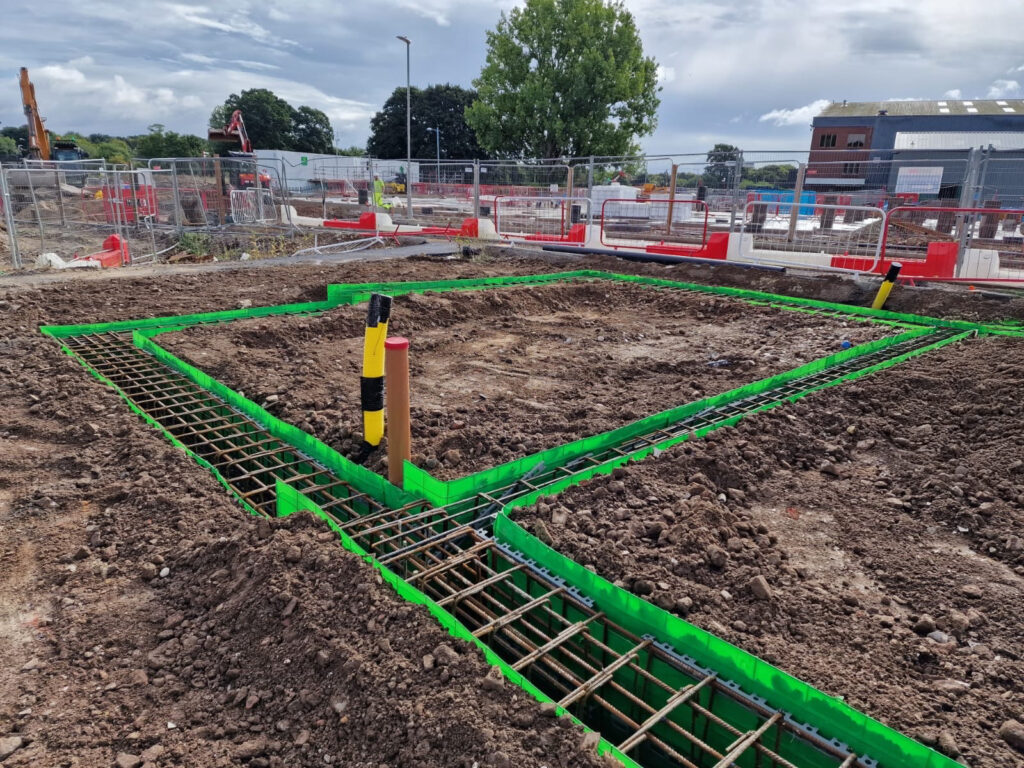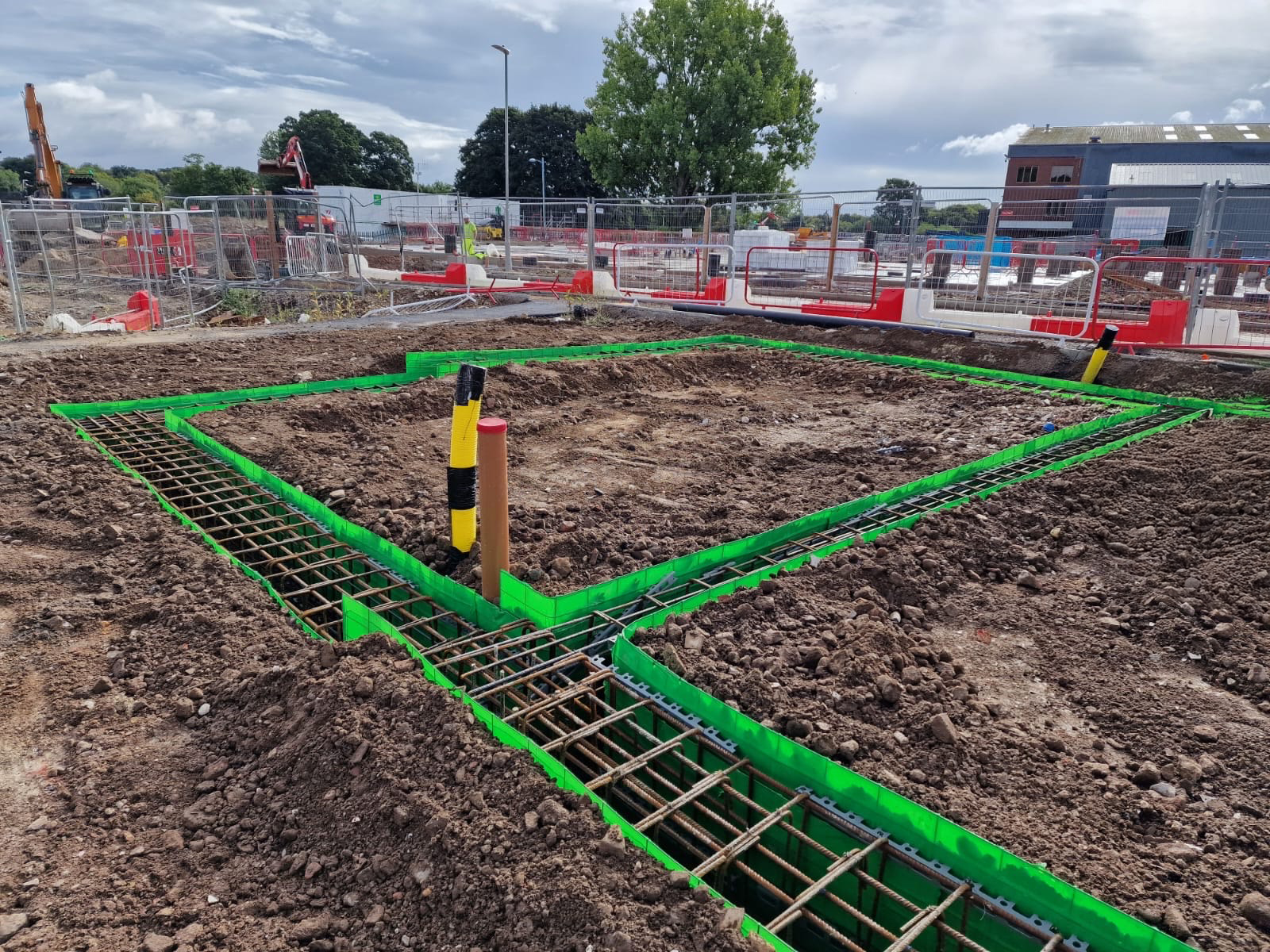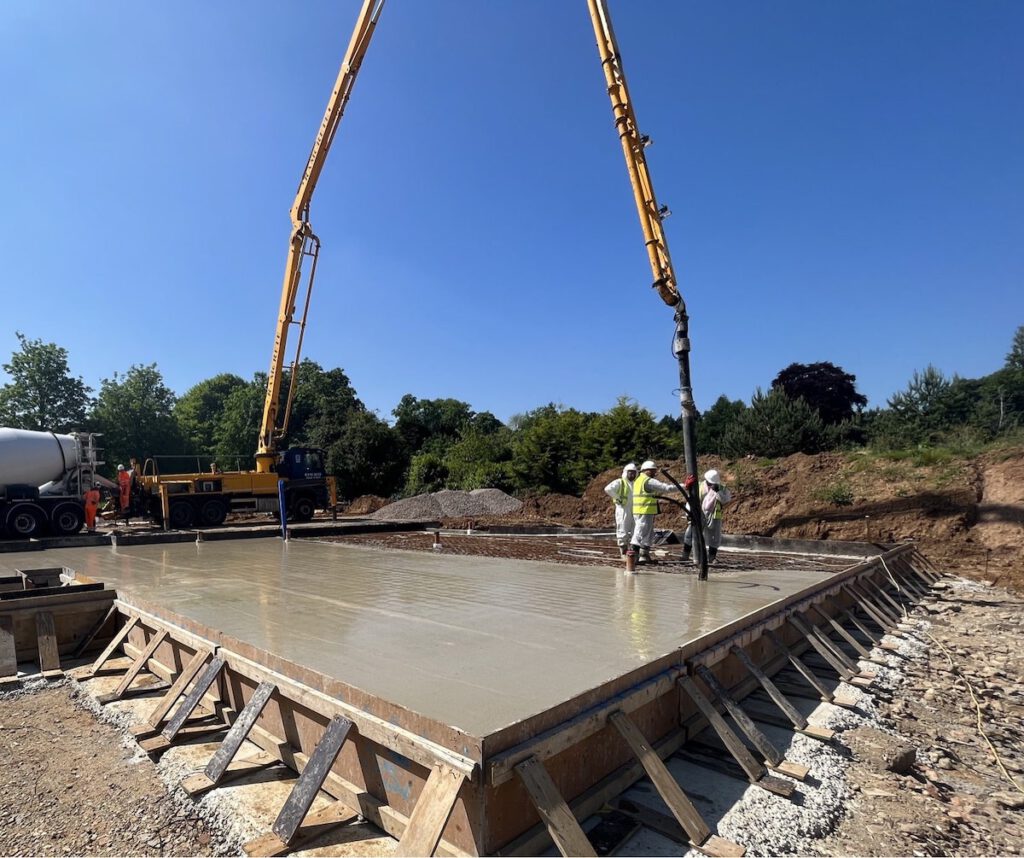When it comes to choosing the right foundation for your development, understanding the strengths and limitations of each type is essential. Two of the most commonly used foundation systems are raft foundations and strip foundations, but they serve very different purposes.
In this article, we compare the pros and cons of raft vs strip foundation systems to help you make the best decision for your site.
What is a Strip Foundation?
A strip foundation is a continuous strip of concrete that supports load-bearing walls. It transfers the weight of the structure to the ground over a narrow area and is generally used on sites with uniform, good-quality soil and light to moderate loads.
Pros of Strip Foundations:
- Simple to design and install
- Cost-effective for small, straightforward projects
- Ideal for uniform soil conditions
- Suitable for masonry and low-rise residential buildings
Cons of Strip Foundations:
- Not suitable for variable or poor ground conditions
- Limited ability to distribute load across wider areas
- Vulnerable to ground movement (e.g., from clay heave or tree influence)
- May require deeper excavations on sloping or soft sites

Strip Foundations from SPEEDECK Foundations
What is a Raft Foundation?
A raft foundation is a large concrete slab that spreads across the entire footprint of a structure. It distributes the structural load over a wide area, making it suitable for sites with weaker or more variable soils.
Pros of Raft Foundations:
- Excellent for weaker or inconsistent ground conditions
- Spreads loads evenly, reducing risk
- Faster installation on large sites than with shallow foundations
- Can reduce excavation and spoil disposal volumes
Cons of Raft Foundations:
- May require a deep transfer mattress
- Needs structural and geotechnical design to prevent issues
- Reinforcement and thickness requirements can increase depending on soil and load
- Typically not cost effective on sites which are prone to clay heave from tree action.

Ground Bearing Raft Foundations with SPEEDECK Foundations
Raft vs Strip Foundation, How Do You Choose?
When deciding between raft vs strip foundation systems, the key considerations are:
- Soil quality and type
- Load and structure type
- Site conditions (e.g., slope, water table, tree proximity)
- Project size and cost constraints
Here’s a side-by-side comparison:
| Factor | Strip Foundation | Raft Foundation |
| Soil Requirements
| Good, uniform bearing capacity | Weaker or variable soils |
| Cost Efficiency
| Low cost for small builds | Better for large footprints or weaker soils |
| Load Distribution
| Focused under walls | Evenly spread across entire structure |
| Excavation Depth
| Can be deep depending on conditions | Shallower overall excavation, except in areas of clay heave risk |
| Suitability for Trees
| Deepening required within influence of trees and clay soils | Typically not cost effective where clay heave due to tree action is a risk |

Piled raft foundations from SPEEDECK Foundations
A Third Option: Pile Raft Foundations
For sites with challenging ground conditions, Made Ground, or tree influence, both raft and strip foundations may be insufficient. In these cases, a pile raft foundation may be the most effective solution, combining the flexibility and efficiency of a raft with the deep support of piles.
Learn more about how pile raft foundations can solve even the toughest ground challenges.
There’s no one-size-fits-all answer when it comes to raft vs strip foundation design. The right choice depends on your site’s ground conditions, the building’s load profile, and your overall budget and timeline.
At SPEEDECK, we provide expert advice and foundation design tailored to your specific development needs. Whether you’re building on solid ground or facing more complex geotechnical conditions, we can help you choose and deliver the right foundation system.
Planning your next project? Talk to us today about your foundation options.






